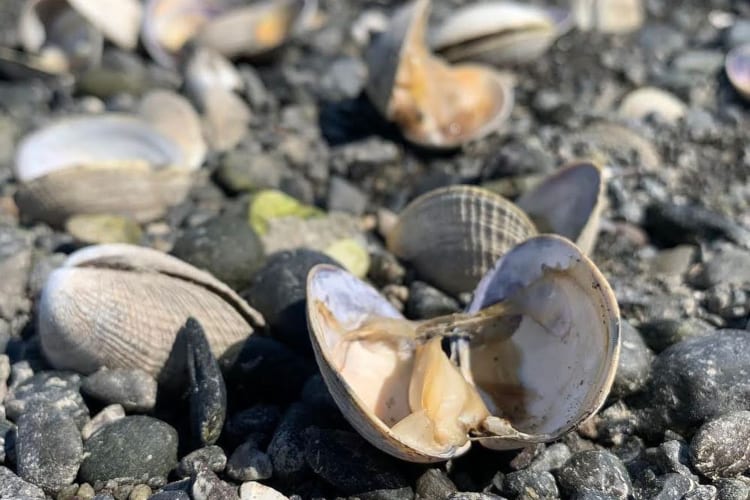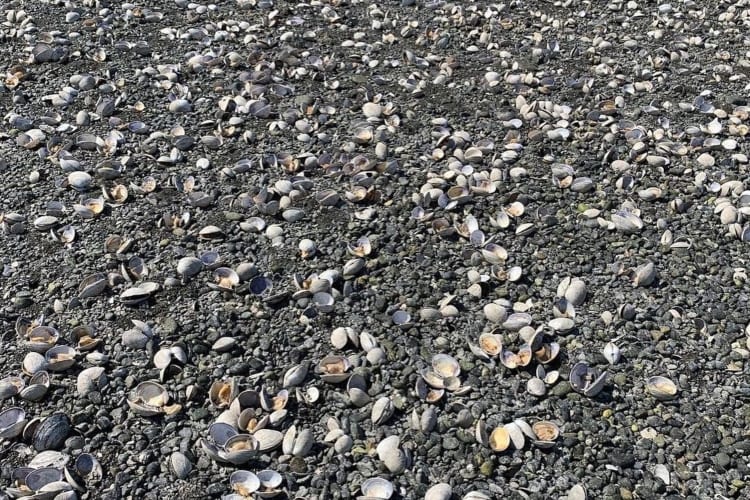
The 2021 Heat Wave Is Killing Off Delicious Shellfish
Recently, the Pacific Northwest found itself in a sweltering heat wave. As a result, delicious shellfish all over the local beaches died from overheating.


hamahamaoysters/Instagram
This year America has faced one of the hottest heat waves in its history. In particular, the Pacific Northwest found itself in sweltering temperatures. Multiple sources have showcased a growing food problem: shellfish all over the local beaches died from overheating.
Facing The Heat Wave

hamahamaoysters/Instagram
Recently the website Eather joined the long list of sources reporting the results of a terrible heat wave that hit the Pacific Northwest. Due to the high temperatures, marine life has started overheating. Numerous places hit the highest temperatures in years: 116 degrees in Oregon, 117 degrees in British Columbia, 109 degrees on the Olympic Peninsula in Washington. Afterward, the Hama Hama Company, a fifth-generation family-run shellfish farm open for 99 years, also shared their side on Instagram.
“For all of you wondering what impact the heatwave would have on the beaches… here are some images taken yesterday of our clam beds in Hood Canal. So far the northern beaches, where we’re currently harvesting, are doing fine and the water is still nice and cold,” the company posted online. “The Canal had a rough time of it because the heatwave coincided with midday extreme low tides and calm weather.” Sadly, the caption also included pictures of shellfish meeting their end in the scorching sun. Unfortunately, they are quite literally cooking in their own shells. While commenters had nice things to say, it doesn’t stop the suffering these seafood businesses face because of the rising temperatures.
Shellfish Losses

hamahamaoysters/Instagram
So, what happens next? Well, there’s no definite answer. “We don’t really know the extent of the damage,” Lissa James Monberg, Marketing Director of Hama Hama Company, said. “It was epic bad timing. We had really, really low tides midday on Saturday, Sunday and Monday, so the intertidal area was exposed to the full force of the blazing sun.”
Things are even worse than they seem. You see, clams don’t usually have meat left in them after drying out. “Usually when you see a dead clam on the beach you just see the shell,” Monberg explained. “You don’t see the meat. These images are scary because the clams are full of meat… they’re literally just sitting there cooked. Usually when a clam dies it’s quickly eaten by the army of fierce, tiny creepy crawlies who inhabit the intertidal zone with the farmed shellfish: eel-like critters called gunnels, miniature crab, hermit crab, tiny fish called sculpin, etc. These animals live all over the beach, take refuge underneath the oysters when the tide is out, and feast on whatever they can find when the tide is high.”
Meanwhile, there are still many questions to answer. For instance, Monberg has no idea why other critters did not eat the meat. “There must have just been too many dead clams at once,” she hypothesized. Monberg hopes that the heat waves get more attention and that people will pay more attention to climate change. We can make a difference!
Sources: Fishing Industry News, The Takeout.


You must be logged in to post a comment Login